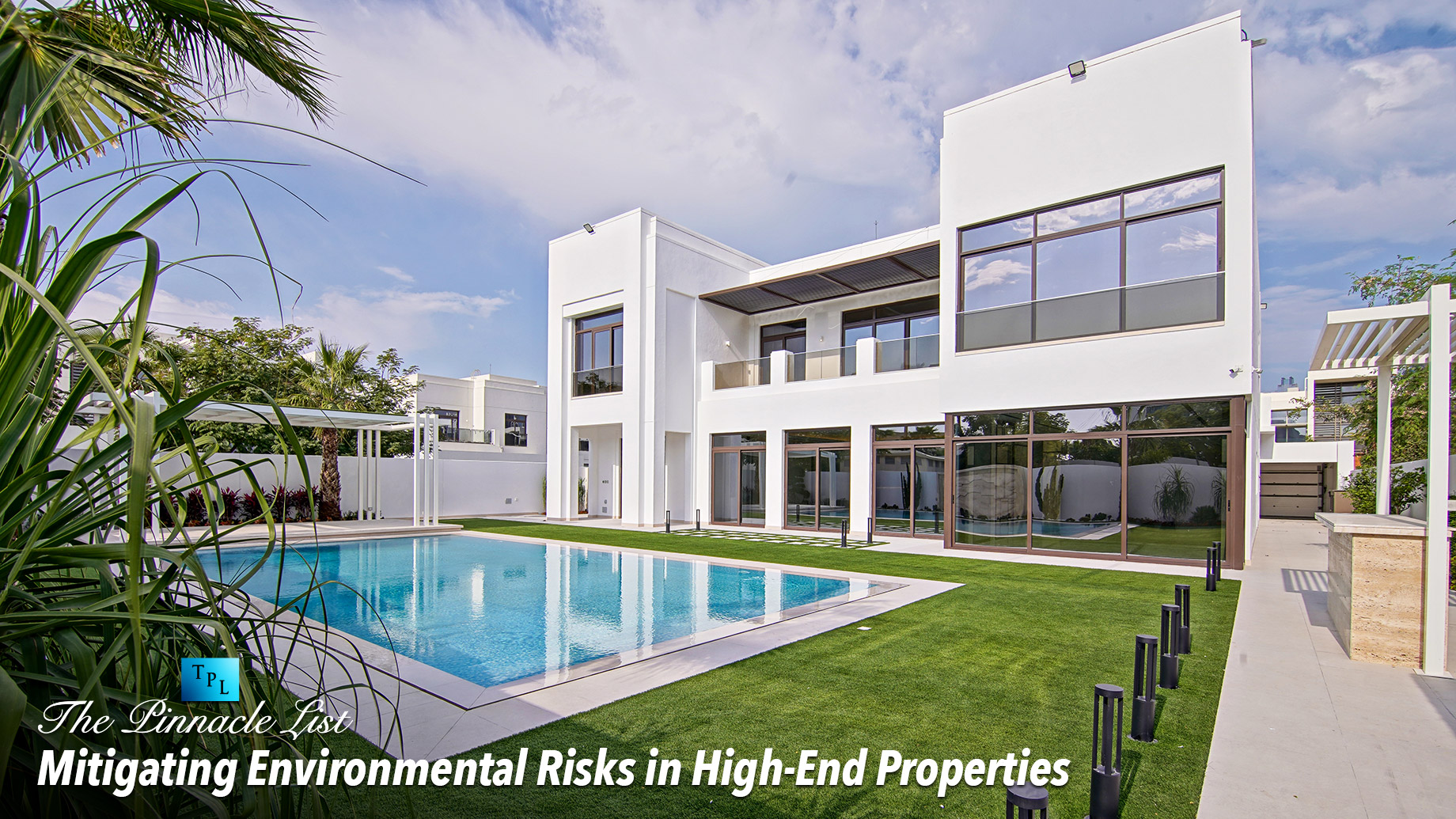
In the luxury real estate market, defined by extravagant dimensions, advanced technological features, luxurious amenities, and prestigious locations, environmental risks are potential threats to the occupants and can drastically depreciate the property’s value. As the effects of global climate change become more pronounced and concerns about sustainable environmental practices grow, addressing these risks has become a critical aspect of luxury real estate investment. Properly managing and reducing a property’s exposure to environmental risks is essential for preserving its value and ensuring its long-term usefulness.
Below is an exploration of critical strategies for managing environmental risks in high-end properties:
Conduct Thorough Environmental Assessments
Before acquiring or developing any luxury property, it is crucial to conduct comprehensive environmental assessments to identify potential risks:
- Flooding: Properties in coastal or low-altitude regions are particularly vulnerable to flooding. Assessments should include historical flood data, proximity to flood zones, and potential impacts from rising sea levels.
- Soil and Water Contamination: Testing for contaminants in soil and water is vital for properties near industrial zones or former waste disposal sites, helping to avoid costly remediation efforts.
- Climate Risks: Evaluating transitional and non-transitional climate risks—such as hurricanes, heatwaves, and wildfires—is vital for informed decision-making and risk management.
For example, the use of aqueous film-forming foam (AFFF) in firefighting, which has been linked to water contamination and environmental hazards, should be carefully considered. Property developers and owners should know the potential liabilities of such substances, as detailed on ConsumerShield.
Implement Resilient Design and Construction Practices
Designing and constructing luxury properties with resilience in mind can significantly mitigate environmental risks:
- Elevated Foundations: For properties in flood-prone areas, raising the structure’s foundation or constructing on stilts can help prevent flood damage.
- Storm-Resistant Materials: Stormproof windows, doors, and other materials can protect against damage from high winds and heavy rains, particularly in hurricane-prone regions.
- Green Roofs and Walls: These features provide insulation, help manage stormwater, and reduce the urban heat island effect.
Incorporate Sustainable Technologies and Practices
Integrating sustainable technologies can minimize a property’s environmental footprint and reduce associated risks:
- Energy-Efficient Systems: Installing high-efficiency HVAC systems, solar panels, and smart thermostats can reduce energy consumption and prevent overheating or system failures.
- Water Management Systems: Implementing rainwater harvesting, greywater recycling, and drought-tolerant landscaping reduces water usage and mitigates the impact of water scarcity.
- Indoor Air Quality Measures: Utilizing advanced air filtration systems and green building materials can improve indoor air quality, protecting occupants from health issues related to poor air conditions.
Develop an Emergency Preparedness Plan
A comprehensive emergency preparedness plan is essential for managing environmental risks:
- Evacuation Procedures: Establish clear evacuation plans for natural disasters and ensure all residents and staff are familiar with them.
- Emergency Kits: Equip the property with emergency kits that include first aid supplies, food, water, and flashlights.
- Backup Power Systems: Invest in backup power sources to maintain essential functions during power outages caused by extreme weather events.
Monitor and Adapt to Environmental Changes
Continuous monitoring and adaptability are vital in managing long-term environmental risks:
- Regular Inspections: Conduct frequent inspections to identify and address potential issues, such as water damage or structural wear, before they escalate.
- Adaptation Strategies: Regularly update the property’s features and management practices to address new environmental threats and risks, including changes in laws, reinforcement of structures, or the acquisition of new materials and equipment.
Promote Environmental Stewardship
Fostering a culture of environmental stewardship among residents and staff can enhance risk management efforts:
- Education and Training: Educate residents and staff on sustainable practices, such as energy efficiency, water conservation, and waste management.
- Community Engagement: Support local environmental initiatives and participate in community sustainability projects.
Final Verdict
Managing environmental risks in high-end properties requires a multifaceted approach, including thorough assessments, resilient construction, adopting sustainable technologies, and robust emergency planning. By prioritizing these strategies, property owners and investors can protect their investments, enhance property values, and contribute to a sustainable future. Addressing environmental issues is not just a protective measure—it’s a testament to responsible luxury management and the commitment to sustainable living.